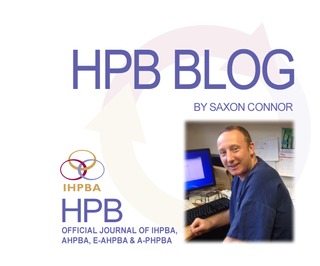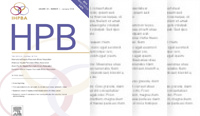International Hepato-Pancreato-Biliary Association
HPB Blog, September 2018

As all those who contribute to the review process for HPB will have observed the volume of material being submitted continues its year on year increase. Recently HPB has been receiving over 70 manuscripts per month. As Editors we are grateful to all involved especially the authors who take the time to subject their work to peer review and the reviewers who provide constructive feedback, all with the aim of improving care for our patients. From this process it is hoped that the highest quality manuscripts emerge for publication. It shouldn’t therefore surprise people that there are 14 such manuscripts in this month’s issue of HPB. The range of topics is broad and so along the lines of my highlight I have grouped those that deal with definitions and prediction while for the rest, anatomical subgroups.
Prognostic models and the importance of definitions.
In my highlight I discuss two papers by Daamen et al and Alexander et al, that demonstrate the importance of continuing to standardise definitions and data presentation. Without addressing these issues we will not be able to improve predictive modelling. This is highlighted by Samim et al who showed that surgeon assessment was equivalent to available predictive models for predicting complications following HPB surgery. Some were no better than tossing a coin. A similar issue is explored by Daugaard et al who recognised that currently used complication indices did not predict graft survival for patients undergoing liver transplantation and therefore have proposed a weighted scoring system based on the type of complication.
The Pancreas
Vass et al provide an original article looking to use to use drain fluid amylase levels on day 1 post distal pancreatectomy to rule out POPF thus facilitating early drain removal. The authors suggested a level <600IU/L has a negative predictive value of 100%. This was based on data from 53 patients of whom 28 (almost all grade A) developed POPF. There was no comment on whether mesh reinforcement was used for the transection of the pancreatic stump.
Since the publication of the randomised trial showing Pasireotide reduced POPF there has been considerable debate regarding its benefit. This debate centres around its true cost effectiveness and the fact other large datasets have suggested somatostatin analogues may actually cause harm. Young and colleagues report on a series of patients following the introduction of Pasireotide at their institution. No difference was observed in the rate of POPF following the introduction of Pasireotide.
Khalil et al present an interesting article on the effect of blood group type on survival for those with peri-ampullary malignancy other than pancreatic ductal adenocarcinoma (PDAC). Blood group A would appear to be a poor prognostic indicator when compared to blood group O. Interestingly Blood group O patients were less likely to have PDAC and more likely to have ampullary adenocarcinoma as compared to blood group A patients. Therefore not surprisingly the overall survival appeared better for those with blood group O. However, when multivariable analysis was performed blood group seemed to remain as an independent factor but tumour type did not. This seems surprising but the numbers within the non PDAC subgroups remained small and so the risk of type II error exists.
The liver
For those interested in new technology Takahashi describe outcomes of a new parenchymal transection device using bipolar radiofrequency device. Although complication rates were similar this reader was struck by the perioperative transfusion rate of 23% which was almost exclusively in the open group, despite a low reported blood loss. When considering blood loss Lim et al describe their approach and outcomes for liver resection in patients who belong to the Jehovah witness religion. Garnier et al report on an important complication following major liver resection, acute kidney injury (AKI). The incidence of severe AKI (8%) correlated with length of hepatic transection time (>250 mins). The authors suggest that prolonged crystalloid restriction should be challenged and are planning a prospective study. It was interesting to note that patient preoperative medications were not assessed as a variable. One wonders whether the various anti-hypertensives designed to alter renal physiology should also be included in such studies.
There are two interesting articles addressing issues related to HCC, the first is a technical report by Oguro et al looking at outcomes when a macroscopic no margin Hepatectomy is performed for HCC. There was no difference in survival. While a systematic review by Zhu et al comparing outcomes of TACE with or without 125 iodine implantation for HCC suggests the use of 125 iodine improves overall survival and should be the standard of care.
Biliary
Chaudhari et al report on the use of neoadjuvant chemotherapy in a large series of patients with high risk disease. The response rate was an impressive 52% and 41% of patients subsequently had surgery. Although the median overall survival remained poor at 13 months, those who underwent surgery had an impressive median survival of 49 months. Clearly an area that is worth further research.
Saxon Connor
Corporate Partners
If you are interested in becoming a Corporate Partner of the IHBPA please contact industry@ihpba.org
Find out more


